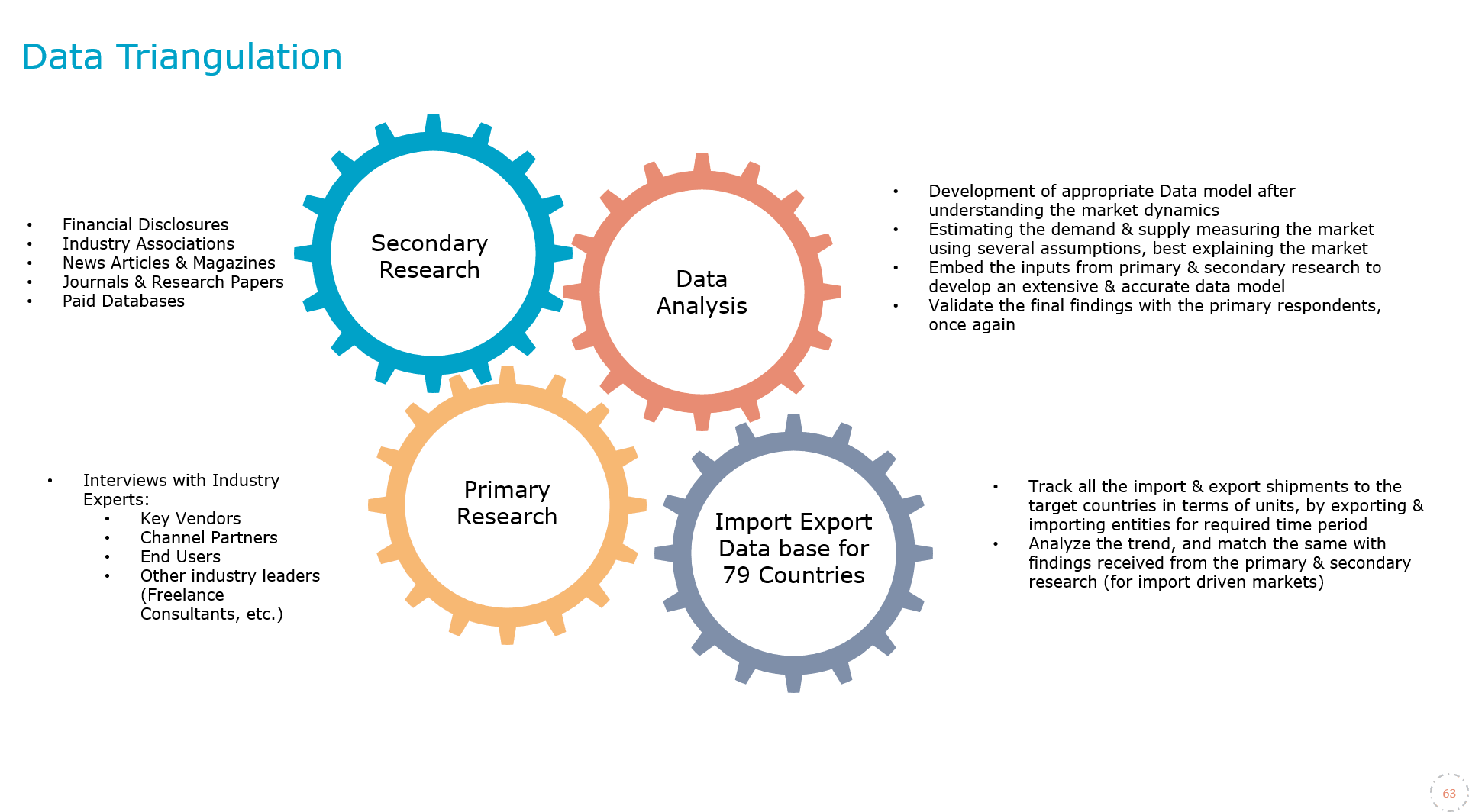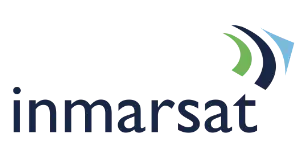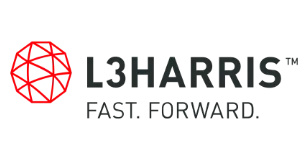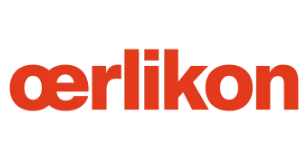
Global UAV Sense-and- Avoid System Market Analysis, 2020
By Application (Commercial, Non-Commercial), By Technology (Co-operative, Non-Cooperative), By Region (North America, South America, Europe, Middle East and Africa, Asia- Pacific),... By Country (US, Canada, Brazil, Germany, Italy, France, UK, Russia, UAE, Israel, Turkey, China, India, Japan, Australia), By Company Read more
- Aerospace & Defense
- Dec 2019
- Pages 186
- Report Format: PDF, Excel, PPT
A UAV Sense-and-Avoid system is an integration of the sensors and controllers, installed in the main airframe of a Unmanned-Aerial-Vehicle (UAV). These sensors and controllers enable the much-needed pre-detection of obstacles in the flying path of the aircraft and avoid accidents while being deployed in the airspace.
| Report Coverage | Details |
| Study Period | Historical Data: 2015-19 |
| Base Year: 2019 | |
| Forecast Period: 2020-25 | |
| Regions Covered | North America |
| Europe | |
| Asia-Pacific | |
| South America | |
| Middle East & Africa | |
| Unit Denominations | USD Million/Billion |
According to MarkNtel Advisors’ research report titled “Global UAV Sense-and-Avoid System Market Analysis, 2020”, the Global UAV Sense-and-Avoid System market is anticipated to exceed the market size of USD 4 billion by 2025. The growth of the market is attributed to factors such as an increasing demand for the autonomous aircraft, operational advantages of the sense-and-avoid systems in avoiding aircraft disruption, and enabling beyond visual line of sight operation of the UAVs.
However, the Global UAV Sense-and-Avoid systems market has been facing challenges due to the presence of several unfavorable factors such as the availability of miniaturizing collision avoidance system for small UAVs, communication-related restraints, and the relatively lower efficiency of the systems to detect and avoid long-range objects.
North America Region is Expected to Attain Lucrative Growth During 2020-25
North America region has been the largest revenue contributor in the global UAV Sense-and-Avoid System market during 2015-2019. The regional market is also projected to experience a significant proportion of the overall market share during the projected period of 2020-2025 due to a prominent presence of leading international UAV sense-and-avoid system manufacturers and suppliers in the country.
The United States is also expected to attain significant growth during the forecast period due to the increasing production and deployment of autonomous drones and military vehicles in the country. Availability of advanced technologies, large-scale military budget, and the supportive government regulations in the country have been boosting the overall North American region’s market growth.
According to MarkNtel Advisors, some the of key competitors operating in the Global UAV Sense-and- Avoid System market include BAE System, Honeywell International, Harris Corporation, Echodyne Corp., Intel Corporation, Precision Hawk, Safran Electronics & Defense, and Thales Group.
Key Questions Answered in the Market Research Report
- What are the key overall market statistics or market estimates (Market Overview, Market Size- By Value, Forecast Numbers, Market Segmentation, Market Shares) of Global UAV Sense-and- Avoid System Market?
- What are the region wise industry size, growth drivers and challenges key market trends?
- What are the key innovations, technology upgrades, opportunities, regulations, growth drivers and challenges in the Global UAV Sense-and- Avoid System Market?
- Who are the key competitors or market players and how they perform in Global UAV Sense-and- Avoid System Market on the basis of competitive benchmarking matrix?
- What are the key results derived from the market surveys conducted during the course of Global UAV Sense-and- Avoid System Market study?
Market Outlook, Segmentation and Statistics
- Market Size and Analysis
- By Revenues
- Market Share and Analysis
- By Application
- Commercial
- Inspection
- Delivery
- Aerial Imaging
- Others
- Non-Commercial
- Commercial
- By Technology
- Co-Operative
- Traffic Alert and Collision Avoidance System (T-CAS)
- Automatic Dependence Surveillance Broadcast (ADS-B) Transponder
- Non-Cooperative
- Radar
- LiDAR
- Sonar/Ultrasonic Sensors
- Passive Sensors
- EO/IR Sensors
- Others
- Co-Operative
- By Region
- North America
- United states
- Canada
- South America
- Brazil
- Europe
- United Kingdom
- Germany
- France
- Italy
- Russia
- Middle East & Africa
- Israel
- Turkey
- South Africa
- UAE
- Asia-Pacific
- China
- India
- Japan
- Australia
- North America
- By Company
- Revenue Shares
- Strategic Factorial Indexing
- Competitor Placement in Markntel Quadrant
- By Application
- Global UAV Sense-and- Avoid System Market Policies, Regulations, Application Standards
- Global UAV Sense-and-Avoid System Market Hotspot and Opportunities
- Global UAV Sense-and-Avoid System Market Key Strategic Imperatives for Success and Growth
Frequently Asked Questions
Q. Which region in UAV Sense-and- Avoid System would grab the highest market share during 2020-25?
A. It is forecast that North American region will dominate the market with majority market share, with market size registering considerably higher CAGR.
Q. Who are the key competitors or players operating in Global UAV Sense-and- Avoid System Market?
A. BAE System, Honeywell International, Harris Corporation, Echodyne Corp., Intel Corporation, Precision Hawk, Safran Electronics & Defense, Thales Group are few of the leading players in the Global UAV Sense-and- Avoid System Market.
Q. Does the report scope cover Global UAV Sense and Avoid system application and region wise market statistics also?
A. Yes, the scope of the report encompass detailed UAV Sense-and- Avoid System application and region wise statistics such as market size, market segmentation based on various subcategories.
Q. Which application segment would emerge as an opportunity area for players in Global UAV Sense-and- Avoid System Market?
A. The commercial sector possessed the largest segments will continue to grow at a highest CAGR, presenting immense opportunities for manufacturers and suppliers of Global UAV Sense-and- Avoid System Market.
Q. Which technology segment would emerge as an opportunity area for players in Global UAV Sense-and- Avoid System Market?
A. The Non-Cooperative segment possessed the largest segments will continue to grow at a highest CAGR, presenting immense opportunities for manufacturers and suppliers of Global UAV Sense-and- Avoid System Market.
Frequently Asked Questions
1. Introduction
1.1. Research Process
1.2. Assumption
1.3. Market Segmentation
1.4. Market Definition
2. Executive Summary
3. Expert Verbatim- What our Experts Say?
4. Global UAV Sense-and-Avoid System Market Outlook, 2015- 2025F
4.1. Market Size and Analysis
4.1.1. By Revenues
4.2. Market Share and Analysis
4.2.1. By Application
4.2.1.1. Commercial
4.2.1.1.1. Inspection
4.2.1.1.2. Delivery
4.2.1.1.3. Aerial Imaging
4.2.1.1.4. Others
4.2.1.2. Non-Commercial
4.2.2. By Technology
4.2.2.1. Co-Operative
4.2.2.1.1. Traffic Alert and Collision Avoidance System (T-CAS)
4.2.2.1.2. Automatic Dependence Surveillance Broadcast (ADS-B) Transponder
4.2.2.2. Non-Cooperative
4.2.2.2.1. Radar
4.2.2.2.2. LiDAR
4.2.2.2.3. Sonar/Ultrasonic Sensors
4.2.2.2.4. Passive Sensors
4.2.2.2.5. EO/IR Sensors
4.2.2.2.6. Others
4.2.3. By Region
4.2.3.1. North America
4.2.3.2. South America
4.2.3.3. Europe
4.2.3.4. Middle East & Africa
4.2.3.5. Asia-Pacific
4.2.4. By Company
4.2.4.1. Revenue Shares
4.2.4.2. Strategic Factorial Indexing
4.2.4.3. Competitor Placement in Markntel Quadrant
5. North America UAV Sense-and-Avoid System Market Outlook, 2015- 2025F
5.1. Market Size and Analysis
5.1.1. By Revenues
5.2. Market Share and Analysis
5.2.1. By Application
5.2.2. By Technology
5.2.3. By Country
5.2.3.1. US
5.2.3.2. Canada
5.3. The US UAV Sense-and-Avoid System Market Outlook, 2015- 2025F
5.3.1. Market Size and Analysis
5.3.1.1. By Revenues
5.3.2. Market Share and Analysis
5.3.2.1. By Application
5.3.2.2. By Technology
5.4. Canada UAV Sense-and-Avoid System Market Outlook, 2015- 2025F
5.4.1. Market Size and Analysis
5.4.1.1. By Revenues
5.4.2. Market Share and Analysis
5.4.2.1. By Application
5.4.2.2. By Technology
6. South America UAV Sense-and-Avoid System Market Outlook, 2015- 2025F
6.1. Market Size and Analysis
6.1.1. By Revenues
6.2. Market Share and Analysis
6.2.1. By Application
6.2.2. By Technology
6.2.3. By Country
6.2.3.1. Brazil
6.3. Brazil UAV Sense-and-Avoid System Market Outlook, 2015- 2025F
6.3.1. Market Size and Analysis
6.3.1.1. By Revenues
6.3.2. Market Share and Analysis
6.3.2.1. By Application
6.3.2.2. By Technology
7. Europe UAV Sense-and-Avoid System Market Outlook, 2015- 2025F
7.1. Market Size and Analysis
7.2. Market Size and Analysis
7.2.1. By Revenues
7.3. Market Share and Analysis
7.3.1. By Application
7.3.2. By Technology
7.3.3. By Country
7.3.3.1. Germany
7.3.3.2. Italy
7.3.3.3. France
7.3.3.4. UK
7.3.3.5. Russia
7.4. Germany UAV Sense-and-Avoid System Market Outlook, 2015- 2025F
7.4.1. Market Size and Analysis
7.4.1.1. By Revenues
7.4.2. Market Share and Analysis
7.4.2.1. By Application
7.4.2.2. By Technology
7.5. Italy UAV Sense-and-Avoid System Market Outlook, 2015- 2025F
7.5.1. Market Size and Analysis
7.5.1.1. By Revenues
7.5.2. Market Share and Analysis
7.5.2.1. By Application
7.5.2.2. By Technology
7.6. France UAV Sense-and-Avoid System Market Outlook, 2015- 2025F
7.6.1. Market Size and Analysis
7.6.1.1. By Revenues
7.6.2. Market Share and Analysis
7.6.2.1. By Application
7.6.2.2. By Technology
7.7. UK UAV Sense-and-Avoid System Market Outlook, 2015- 2025F
7.7.1. Market Size and Analysis
7.7.1.1. By Revenues
7.7.2. Market Share and Analysis
7.7.2.1. By Application
7.7.2.2. By Technology
7.8. Russia UAV Sense-and-Avoid System Market Outlook, 2015- 2025F
7.8.1. Market Size and Analysis
7.8.1.1. By Revenues
7.8.2. Market Share and Analysis
7.8.2.1. By Application
7.8.2.2. By Technology
8. Middle East & Africa UAV Sense-and-Avoid System Market Outlook, 2015- 2025F
8.1. Market Size and Analysis
8.1.1. By Revenues
8.2. Market Share and Analysis
8.2.1. By Application
8.2.2. By Technology
8.2.3. By Country
8.2.3.1. UAE
8.2.3.2. Israel
8.2.3.3. Turkey
8.3. UAE UAV Sense-and-Avoid System Market Outlook, 2015- 2025F
8.3.1. Market Size and Analysis
8.3.1.1. By Revenues
8.3.2. Market Share and Analysis
8.3.2.1. By Application
8.3.2.2. By Technology
8.4. Israel UAV Sense-and-Avoid System Market Outlook, 2015- 2025F
8.4.1. Market Size and Analysis
8.4.1.1. By Revenues
8.4.2. Market Share and Analysis
8.4.2.1. By Application
8.4.2.2. By Technology
8.5. Turkey UAV Sense-and-Avoid System Market Outlook, 2015- 2025F
8.5.1. Market Size and Analysis
8.5.1.1. By Revenues
8.5.2. Market Share and Analysis
8.5.2.1. By Application
8.5.2.2. By Technology
8.6. South Africa UAV Sense-and-Avoid System Market Outlook, 2015- 2025F
8.6.1. Market Size and Analysis
8.6.1.1. By Revenues
8.6.2. Market Share and Analysis
8.6.2.1. By Application
8.6.2.2. By Technology
9. Asia-Pacific UAV Sense-and-Avoid System Market Outlook, 2015- 2025F
9.1. Market Size and Analysis
9.1.1. By Revenues
9.2. Market Share and Analysis
9.2.1. By Application
9.2.2. By Technology
9.2.3. By Country
9.2.3.1. China
9.2.3.2. India
9.2.3.3. Japan
9.2.3.4. Australia
9.3. China UAV Sense-and-Avoid System Market Outlook, 2015- 2025F
9.3.1. Market Size and Analysis
9.3.1.1. By Revenues
9.3.2. Market Share and Analysis
9.3.2.1. By Application
9.3.2.2. By Technology
9.4. India UAV Sense-and-Avoid System Market Outlook, 2015- 2025F
9.4.1. Market Size and Analysis
9.4.1.1. By Revenues
9.4.2. Market Share and Analysis
9.4.2.1. By Application
9.4.2.2. By Technology
9.5. Japan UAV Sense-and-Avoid System Market Outlook, 2015- 2025F
9.5.1. Market Size and Analysis
9.5.1.1. By Revenues
9.5.2. Market Share and Analysis
9.5.2.1. By Application
9.5.2.2. By Technology
9.6. Australia UAV Sense-and-Avoid System Market Outlook, 2015- 2025F
9.6.1. Market Size and Analysis
9.6.1.1. By Revenues
9.6.2. Market Share and Analysis
9.6.2.1. By Application
9.6.2.2. By Technology
10. Global UAV Sense-and-Avoid System Market Policies, Regulations, Application Standards
11. Global UAV Sense-and-Avoid System Market Trends & Insights
12. Global UAV Sense-and-Avoid System Market Dynamics
12.1.Growth Drivers
12.2.Challenges
12.3.Impact Analysis
13. Global UAV Sense-and-Avoid System Market Hotspot and Opportunities
14. Global UAV Sense-and-Avoid System Market Key Strategic Imperatives for Success and Growth
15. Competitive Outlook
15.1.Competition Matrix
15.1.1. Application Portfolio
15.1.2. Brand Specialization
15.1.3. Target Markets
15.1.4. Target Applications
15.1.5. Research & Development
15.1.6. Strategic Alliances
15.1.7. Strategic Initiatives
15.2.Company Profiles (Business Description, Application Segments, Business Segments, Financials, Strategic Alliances/ Partnerships, Future Plans)
15.2.1. BAE System
15.2.2. Honeywell International
15.2.3. Harris Corporation
15.2.4. Echodyne Corp.
15.2.5. Intel Corporation
15.2.6. Precision Hawk
15.2.7. Safran Electronics & Defense
15.2.8. Thales Group
15.2.9. General Atomics Aeronautical Systems, Inc.
15.2.10. FLARM Technology Ltd.
16. Disclaimer
MarkNtel Advisors follows a robust and iterative research methodology designed to ensure maximum accuracy and minimize deviation in market estimates and forecasts. Our approach combines both bottom-up and top-down techniques to effectively segment and quantify various aspects of the market. A consistent feature across all our research reports is data triangulation, which examines the market from three distinct perspectives to validate findings. Key components of our research process include:
1. Scope & Research Design At the outset, MarkNtel Advisors define the research objectives and formulate pertinent questions. This phase involves determining the type of research—qualitative or quantitative—and designing a methodology that outlines data collection methods, target demographics, and analytical tools. They also establish timelines and budgets to ensure the research aligns with client goals.
2. Sample Selection and Data Collection In this stage, the firm identifies the target audience and determines the appropriate sample size to ensure representativeness. They employ various sampling methods, such as random or stratified sampling, based on the research objectives. Data collection is carried out using tools like surveys, interviews, and observations, ensuring the gathered data is reliable and relevant.
3. Data Analysis and Validation Once data is collected, MarkNtel Advisors undertake a rigorous analysis process. This includes cleaning the data to remove inconsistencies, employing statistical software for quantitative analysis, and thematic analysis for qualitative data. Validation steps are taken to ensure the accuracy and reliability of the findings, minimizing biases and errors.

4. Data Forecast and FinalizationThe final phase involves forecasting future market trends based on the analyzed data. MarkNtel Advisors utilize predictive modeling and time series analysis to anticipate market behaviors. The insights are then compiled into comprehensive reports, featuring visual aids like charts and graphs, and include strategic recommendations to inform client decision-making









